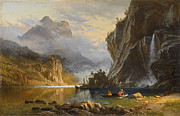Museum of Fine Arts, Houston
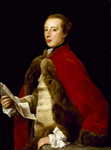
William Fermor, Pompeo Batoni

Thomas Tayleur, First Marquess of Headfort, Pompeo Batoni

The Campagna at Lungezza near Rome, Jean-Achille Benouville
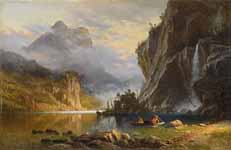
Indians spear fishing , Albert Bierstadt

Landscape, Patrick Henry Bruce

Portrait of a Woman, Adam Buck

Two Friends Around a Table, Adolphe-Felix Cals

Journey of Rebecca, Giovanni Benedetto Castiglione

Cotopaxi, Frederic Edwin Church
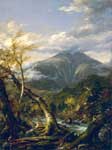
Indian Pass, Thomas Cole

Allegory, Sebastiano Conca

Isabeau de Savoie, Comtesse du Bouchage, Corneille de Lyon

Marie de Batarnay, Corneille de Lyon

René de Batarnay, Comte du Bouchage, Corneille de Lyon

Seascape , Gustave Courbet

Latona and the Lycian Peasants, Joshua Cristall

Highlanders Consulting, Joshua Cristall

Autumn on Greenwood Lake, Jasper Francis Cropsey

Portrait of Maggie Wilson, Frank Duveneck

At the Moulin Rouge, Henri Evenepoel
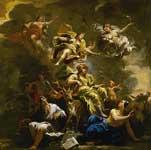
Allegory of Prudence, Luca Giordano

Marsh Sunset, Newburyport, Massachusetts, Martin Johnson Heade
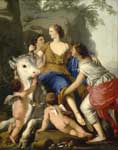
The Rape of Europa, Laurent de La Hyre
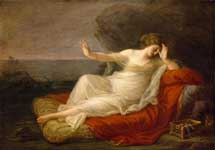
Ariadne Abandoned by Theseus, Angelica Kauffman

Study of a Dead Heron, Edwin Henry Landseer
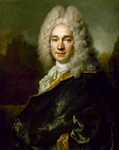
Portrait of Pierre Cadeau de Mongazon, Nicolas de Largillière

William Murray, 1st Earl of Mansfield, Jean-Baptiste van Loo

Vanitas Still-Life with a Skull, Simon Luttichuys

St. John the Baptist Preaching in the Wilderness, Anton Raphael Mengs

The Incredulity of Saint Thomas , François-Joseph Navez

Roman Shepherd Family in the Campagna , François-Joseph Navez

Saints and Angels, Allegretto Nuzi
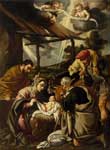
The Adoration of the Shepherds, Pedro de Orrente

Fantasy View with the Pantheon and other Monuments of Ancient Rome, Giovanni Paolo Pannini

Aiding a Comrade , Frederic Remington

Cheyenne Scouts Patrolling the Big Timber of the North Canadian, Oklahoma, Frederic Remington
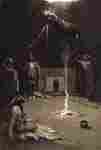
Indian Fire God (The Going of the Medicine-Horse), Frederic Remington
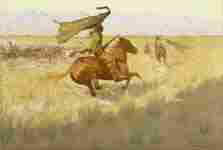
Change of Ownership (The Stampede; Horse Thieves), Frederic Remington

The Herd Boy, Frederic Remington

Fight for the Waterhole, Frederic Remington

A New Year on the Cimarron, Frederic Remington
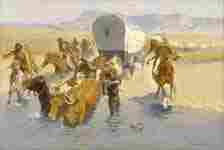
The Emigrants, Frederic Remington

Seascape, William Trost Richards

The Bridge at Giverny, Theodore Robinson

Congress Voting Independence, Edward Savage
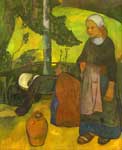
Washerwomen, Paul Serusier

Landscape at Le Pouldu, Paul Serusier
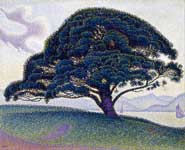
The Bonaventure Pine, Paul Signac
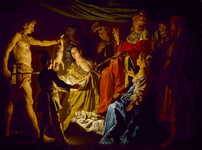
The Judgment of Solomon, Matthias Stom
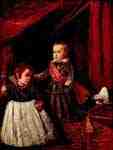 Infant Baltasar Carlos with a Dwarf , Diego Velázquez
Infant Baltasar Carlos with a Dwarf , Diego Velázquez

Cardinal Giulio Spinola, Jacob Ferdinand Voet

Virgin and Child , Rogier van der Weyden

Sir Robert Rookwood, John Michael Wright

Portrait of a Gentleman, Joseph Wright
Fine Art Prints | Greeting Cards | Phone Cases | Lifestyle | Face Masks | Men's , Women' Apparel | Home Decor | jigsaw puzzles | Notebooks | Tapestries | ...
The Museum of Fine Arts, Houston (MFAH), located in the Houston Museum District, Houston, is one of the largest museums in the United States.[2] The permanent collection of the museum spans more than 6,000 years of history with approximately 64,000 works from six continents.[3]
The museum benefits the Houston community through programs, publications and media presentations. Each year, 1.25 million people benefit from museum's programs, workshops and resource centers. Of that total, more than 500,000 people participate in the community outreach programs.
Contents
Facilities
Caroline Wiess Law Building
Audrey Jones Beck Building
Glassell School of Art
Gardens at Bayou Bend, donated by Ima Hogg
Rienzi House Museum
The MFAH's permanent collection totals 63,718 pieces in 270,000 square feet (25,000 m2) of exhibition space, placing it among the larger art museums in the United States. The museum's collections and programs are housed in seven facilities.
Main Campus
Caroline Wiess Law Building - the original neo-classical building was designed in phases by architect William Ward Watkin. The original Caroline Wiess Law building was constructed in 1924 and the east and west wing were added in 1926. The Robert Lee Blaffer Memorial Wing was designed by Kenneth Franzheim and opened to the public in 1953. The new construction included significant structural improvements to several existing galleries—most notably, air conditioning. Two subsequent additions, Cullinan Hall and the Brown Pavilion, designed by Ludwig Mies van der Rohe were built in 1958 and 1974 respectively. This section of the Museum of Fine Arts, Houston campus is the only Mies-designed museum in the United States. The Caroline Wiess Law building provides an ideal space in which to exhibit the museum’s collection of twentieth- and twenty-first-century artworks, as well as installations of Oceanic art, Asian art, Indonesian gold artifacts, and Pre-Columbian and sub-Saharan African artworks. Of special interest is the Glassell Collection of African Gold, the largest assemblage of its kind in the world [4]
Audrey Jones Beck Building - Opened to the public in 2000, the Beck Building was designed by Rafael Moneo, a Pritzker Architecture Prize Laureate and a respected Spanish architect of tremendous range.[5] The museum Trustees elected to name the building after Audrey Jones Beck in honor of the large collection she had donated to the museum several decades prior. The building also doubles as the museum's main campus exhibition space with an additional 158,150 sq ft (14,693 m2).
Nancy and Rich Kinder Building - In 2012, the museum selected Steven Holl Architects over two other finalists, Snøhetta and Morphosis, in an international search to design a 164,000 sq ft (15,200 m2) expansion[6] that will primarily hold galleries for art after 1900. The new building will occupy a two-acre museum-owned site that is currently a parking lot. The new MFAH building will be integrated with the adjacent Lillie and Hugh Roy Cullen Sculpture Garden and an expanded Glassell School of Art. It will also include 25 galleries for traveling exhibitions,[7] educational areas, a library, lecture halls, a theater and a restaurant. The museum expects the project to cost $250 million to $350 million with the design process taking about two years, followed by five years of construction.[8]
The Lillie
and Hugh Roy Cullen Sculpture Garden - was designed by US-born artist
and landscape architect Isamu Noguchi and opened in 1986.The Lillie and
Hugh Roy Cullen Sculpture Garden houses more than twenty-five
masterworks by some of the most acclaimed artists from the nineteenth,
twentieth, and twenty-first centuries from the MFAH and other major
collections. The garden itself is a sculpture that unites the pathways
between the Caroline Wiess Law Building and the Glassell School of Art.
Glassell School of Art - founded in 1979 and designed by architect S.
I. Morris, the Glassell School of Art offers programs under the Studio
School for Adults. The Glassell School of Art serves as the teaching
wing of the MFAH, with a variety of classes, workshops, and educational
opportunities for students diverse in age, interests, experience, and
needs. In 2014, Steven Holl designed a new L-shaped building for the
school, featuring a ramped amphitheatre that leads up to a walkable
rooftop garden.[9] In addition to opening onto Noguchi's sculpture
garden and providing added outdoor space for programs and performances,
the 80,000 sq ft (7,400 m2) building also sits atop an extensive
underground parking garage.[10]
The school offers classes at the Studio School for Adults and the Glassell Junior School, as well as Community Bridge Programs, special programs for youths, and the Core Artist-in-Residence Program.
Central Administration and Glassell Junior School of Art Building - The building, opened in 1994 and designed by Texan architectural designer Carlos Jimenez, houses the museum's administrative functions as well as the Glassell Junior School. The MFAH is the only museum facility in the United States that has a special building dedicated solely to art classes for children.[11]
Other Facilities
Bayou Bend Collection and Gardens - features one of the nation's finest
collections of American decorative art and furniture. The Bayou Bend
Collection and Gardens, former home of Life Trustee Ima Hogg, was
designed by architect John F. Staub in 1927. Miss Hogg donated the
property to the MFAH in 1957, followed, in 1962, by the donation of its
collection of paintings, furniture, ceramics, glass, metals, and
textiles. Bayou Bend was officially dedicated and opened to the public
in 1966. Situated on 14 acres (57,000 m2) of formal and woodland
gardens five miles (8 km) from the main museum campus, the historic
house museum documents American decorative and fine arts from the
seventeenth to the mid-nineteenth centuries. It is esteemed as one of
the nation’s premier museums of decorative arts.
Rienzi - the
MFAH house museum for European decorative arts, Rienzi was donated to
the MFAH by Carroll Sterling Masterson and Harris Masterson III in
1991. The residence, named for Rienzi Johnston, Mr. Masterson's
grandfather, is situated on 4.4 acres (18,000 m2) in Homewood Addition,
surrounded by Houston's River Oaks neighborhood. The structure was
designed in 1952 by John F. Staub, the same architect who designed
Bayou Bend. Completed in 1954, Rienzi served as both a family home and
a center for Houston civic and philanthropic activity from the 1950s
through the mid-1990s. After Mr. Masterson's death, the MFAH
transformed the home into a museum and subsequently opened it to the
public in 1999 [12]
History
Watkin Building, 1924
The Museum Of Fine Arts, Houston (MFAH) is the oldest art museum in Texas. In 1917, the museum site was dedicated by the Houston Public School Art League (later the Houston Art League) with the intention of becoming a public art museum. The first museum building – opened to the public in 1924 – represented the determination of Houstonians to transform their growing city into a rich cultural center. Trustees and staff dedicated the small art collection to the community and defined the function of the museum as bringing “art into the everyday life” of all Houstonians. Today the MFAH encompasses two buildings, the Caroline Wiess Law and Audrey Jones Beck buildings, that house its primary collections and temporary exhibitions; two decorative arts house museums; The Glassell studio art school; a sculpture garden; a state-of-the-art facility for conservation, storage and archives; and an administrative building with the Glassell Junior school of Art
Prior to
the opening of the permanent museum building in 1924, George M. Dickson
bequeathed to the collection its first important American and European
oil paintings. In the 1930s, Houstonian Annette Finnigan began her
donation of antiquities and Texas philanthropist Ima Hogg gave her
collection of avant-garde European prints and drawings. Ima Hogg’s gift
was followed by the subsequent donations of her Southwest Native
American and Frederic Remington collections during the 1940s. The same
decade witnessed the 1944 bequest of eighty-three Renaissance
paintings, sculptures and works on paper from renowned New York
collectors Edith and Percy Straus. Over the next two decades, gifts
from prominent Houston families and foundations concentrated on
European art from the fifteenth to twentieth centuries, contemporary
painting and sculpture, and African, Oceanic and Pre-Columbian art.
Among these are the gifts of Life Trustees Sarah Campbell Blaffer,
Dominique de Menil and Alice N. Hanzsen as well as that of the Samuel
H. Kress Foundation. Augmented by museum purchases, the permanent
collection numbered 12,000 objects by 1970.
Museum circa 1926
The MFAH collection nearly doubled from 1970 to 1989, fueled by continued donations of art along with the advent of both accession endowment funding and corporate giving. In 1974, John and Audrey Jones Beck placed on long-term loan fifty Impressionist and Post-Impressionist masterpieces, augmenting the museum’s already strong Impressionist collection. This collection would never leave the MFAH, formally entering its holdings in 1998 as a gift of Life Trustee Audrey Jones Beck. The collection is permanently displayed in the building that bears her name. On the heels of the Cullen Foundation’s funding of the MFAH’s first accessions endowment in 1970, the Brown Foundation, Inc., launched a challenge grant in 1976 that would stay in effect for twenty years raising funds for both accessions and operational costs in landmark amounts and providing incentive for additional community support. Also in 1976, the photography collection was established with Target Stores’ first corporate grant to the museum. Today the museum is the sixth-largest in the country.[13]
Collection
Leda and the swan, by Peter Paul Rubens.
With more than 62,000 works of art, the Museum of Fine Arts, Houston has the largest and most diverse art collection in the Southwestern United States. The majority of the museum's collection lie in the areas of Italian Renaissance painting, French Impressionism, photography, American and European decorative arts, African and pre-Columbian gold, American art, and post-1945 European and American painting and sculpture. Other facets of the collection include African-American art and Texas painting. Emerging collection interests of modern and contemporary Latin American art, Asian art, and Islamic art continue to strengthen the museum's collection diversity. As a result of its encyclopedic collection, the museum ranks nationally among the top ten art museums in attendance.[14]
Management
Philippe
de Montebello directed the museum from 1969 to 1974.[15] During the
28-year tenure of Peter C. Marzio between 1982 and 2010, the Museum of
Fine Arts’ yearly attendance increased to roughly two million from
300,000; its operating budget climbed to $52 million from $5 million,
and its endowment reached $1 billion[13] (before the 2008 recession
dropped its value to about $800 million).[15] The museum’s permanent
collection more than tripled in size, to 63,000 works from 20,000.[16]
In 2010, Marzio was the sixth-highest-paid charity chief executive in
the country, with compensation in 2008 of $1,054,939.[13] A year after
Peter Marzio died in 2010, Gary Tinterow was appointed as the museum's
director.[17]
See also
Bayou Bend Collection and Gardens
Ima Hogg
Samuel Henry Kress
Notes
The Museum of Fine Arts, Houston: About, ARTINFO, 2008, retrieved 2008-07-23
The Museum of Fine Arts, Houston. "Museum of Fine Arts, Houston". Mfah.org. Retrieved 2012-09-19.
"Major Expansion of the Museum of Fine Arts, Houston Moves Forward with
the Construction of the Audrey Jones Beck Building". Tfaoi.com.
1924-04-12. Retrieved 2012-09-19.
The Museum of Fine Arts, Houston. "The Glassell Collections". Mfah.org. Retrieved 2012-09-19.
"The Hyatt Foundation". Pritzkerprize.com. Retrieved 2012-09-19.
Pei-Ru Keh (January 19, 2015), Steven Holl Architects' dramatic
expansion design for The Museum of Fine Arts in Houston Wallpaper.
Pei-Ru Keh (January 19, 2015), Steven Holl Architects' dramatic
expansion design for The Museum of Fine Arts in Houston Wallpaper.
Robin Pogrebin (February 7, 2012), Houston Museum Chooses Architect for Expansion Plan New York Times.
Pei-Ru Keh (January 19, 2015), Steven Holl Architects' dramatic
expansion design for The Museum of Fine Arts in Houston Wallpaper.
Pei-Ru Keh (January 19, 2015), Steven Holl Architects' dramatic
expansion design for The Museum of Fine Arts in Houston Wallpaper.
The Museum of Fine Arts, Houston. "Glassell Junior School". Mfah.org. Retrieved 2012-09-19.
The Museum of Fine Arts, Houston. "Rienzi". Mfah.org. Retrieved 2012-09-19.
Rebecca S. Cohen (April 9, 2011), Replacing a Museum Director Who Was a Rare Find New York Times.
The Museum of Fine Arts, Houston. "MFAH Annual Report 2008-2009". Mfah.org. Retrieved 2012-09-19.
Douglas Britt (December 12, 2010), Peter Marzio, 67; transformed Houston museum Houston Chronicle.
William Grimes (December 11, 2010), Peter C. Marzio, Houston Museum Director, Dies at 67 New York Times.
Carol Vogel (December 1, 2011), Met Veteran Named Director of Houston Art Museum New York Times.
----
Fine Art Prints | Greeting Cards | Phone Cases | Lifestyle | Face Masks | Men's , Women' Apparel | Home Decor | jigsaw puzzles | Notebooks | Tapestries | ...
----
Artist
A - B - C - D - E - F - G - H - I - J - K - L - M -
N - O - P - Q - R - S - T - U - V - W - X - Y - Z
Retrieved from "http://en.wikipedia.org/"
All text is available under the terms of the GNU Free Documentation License


